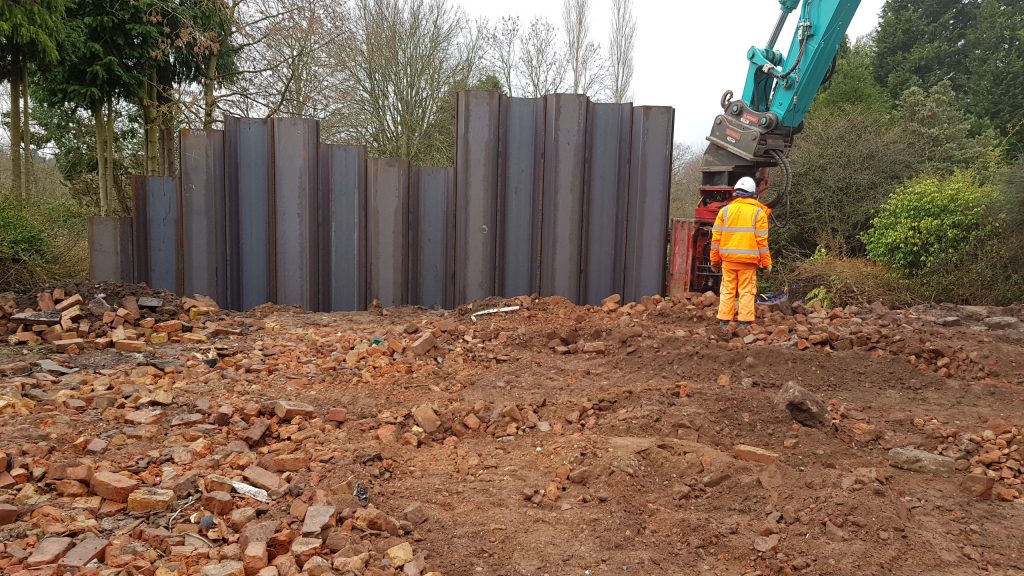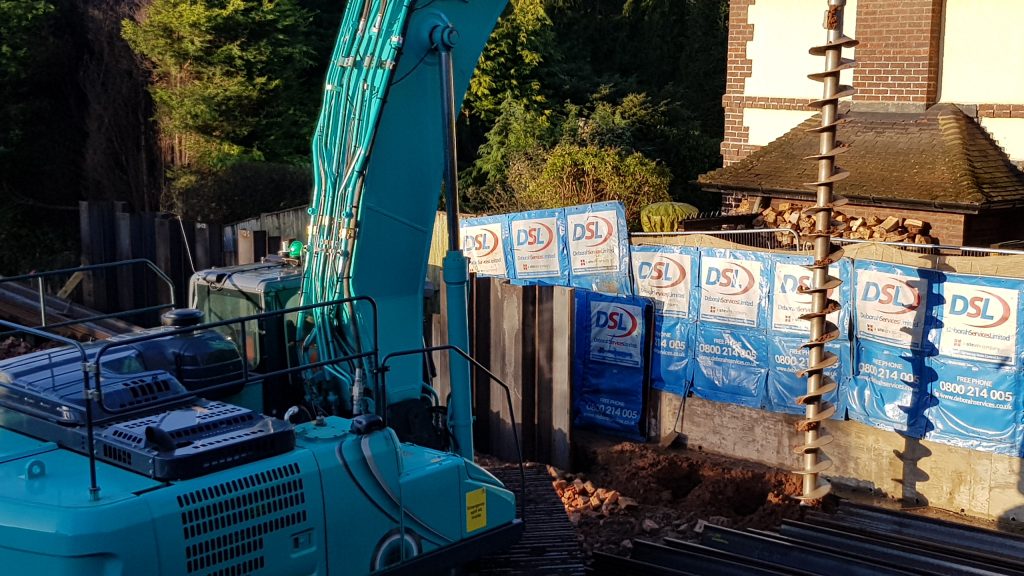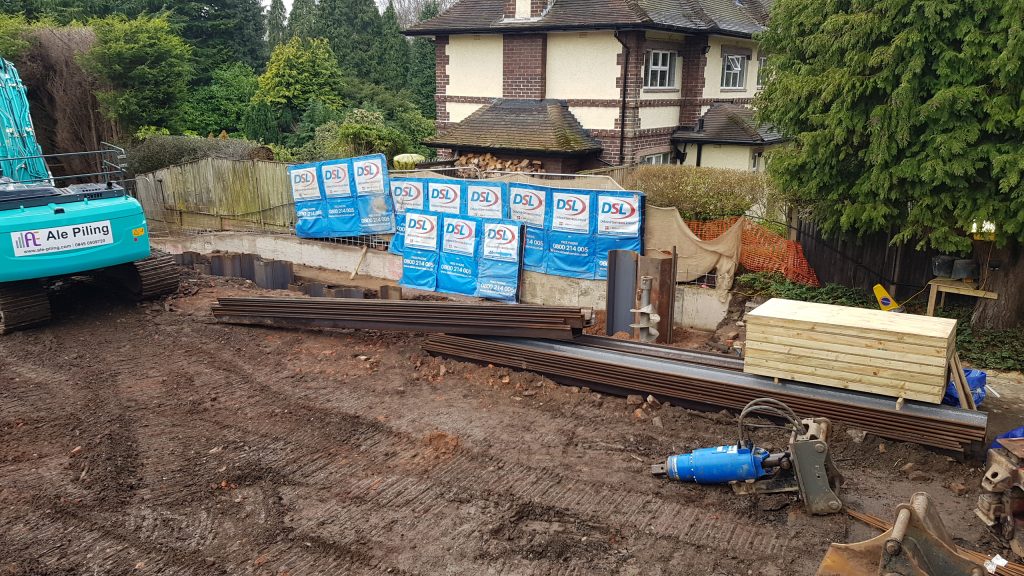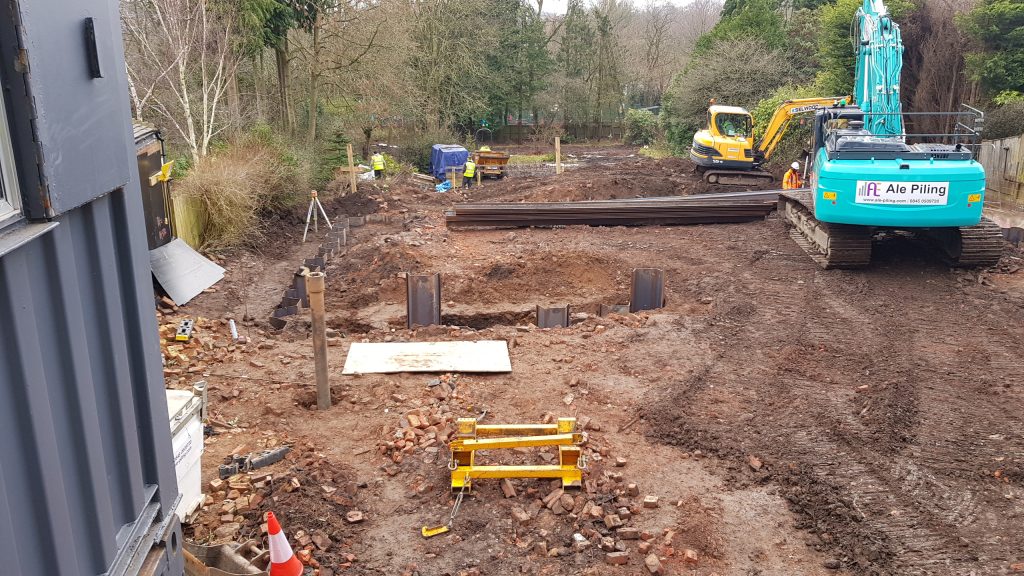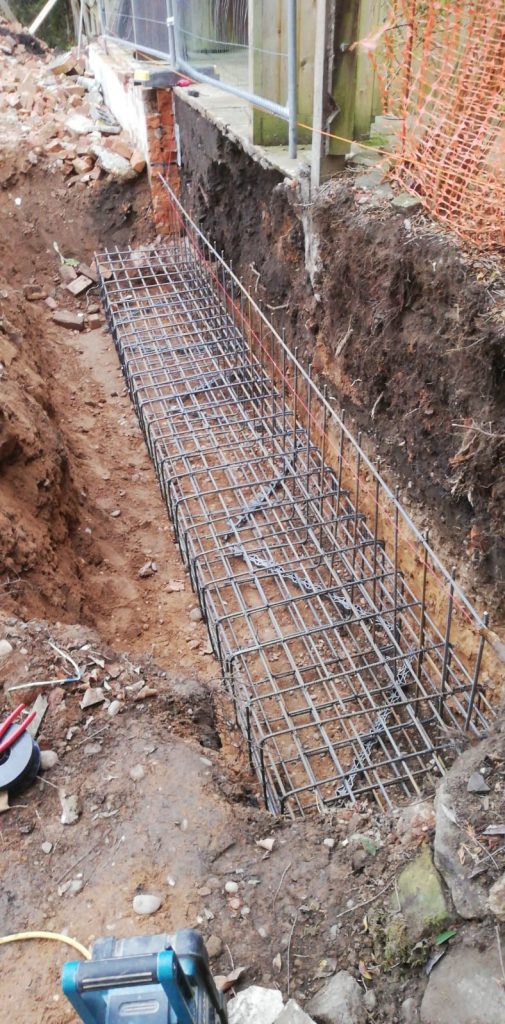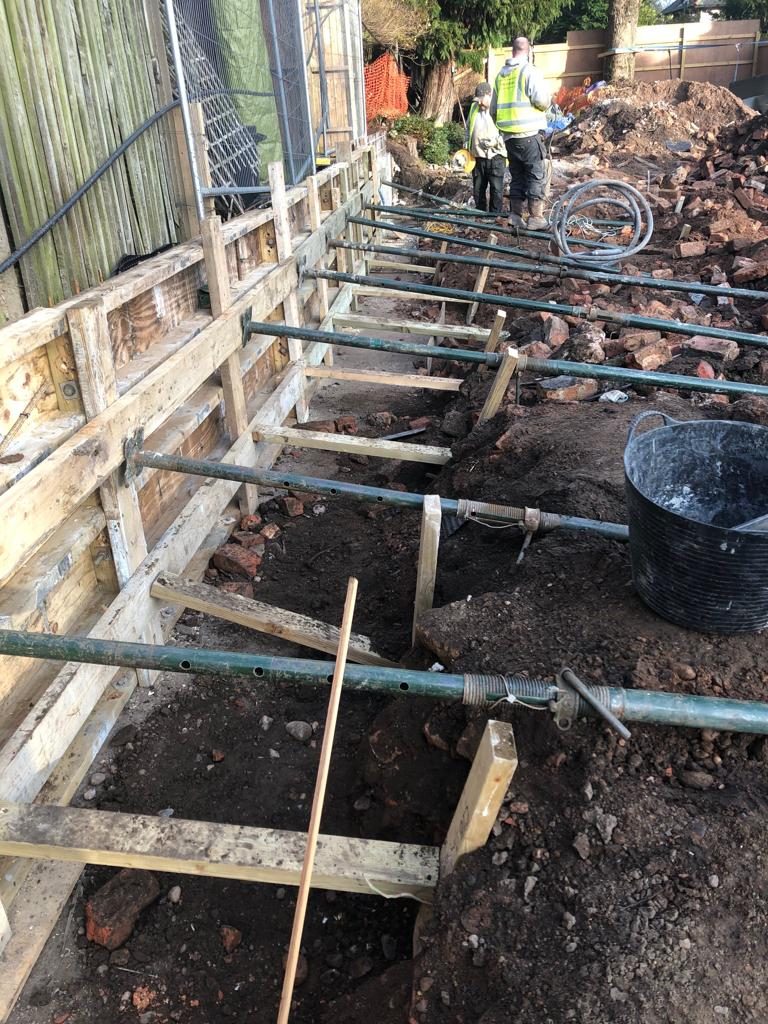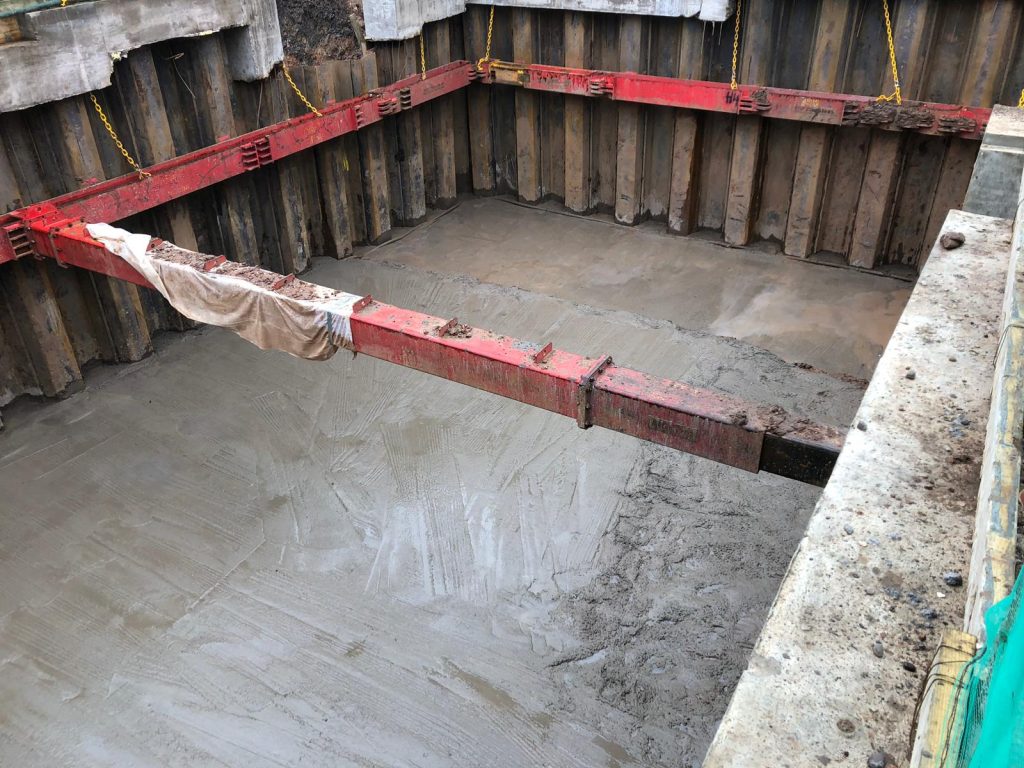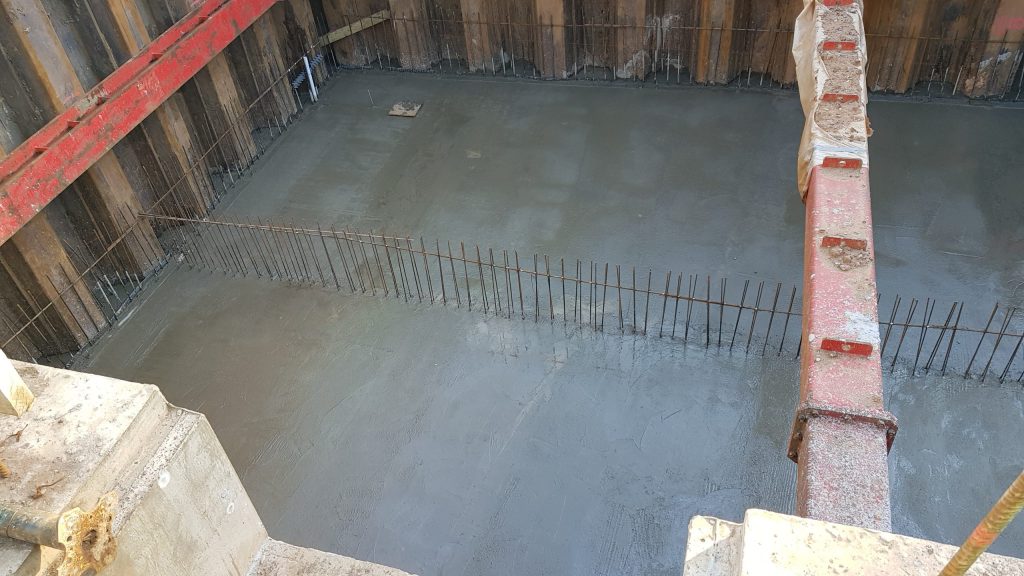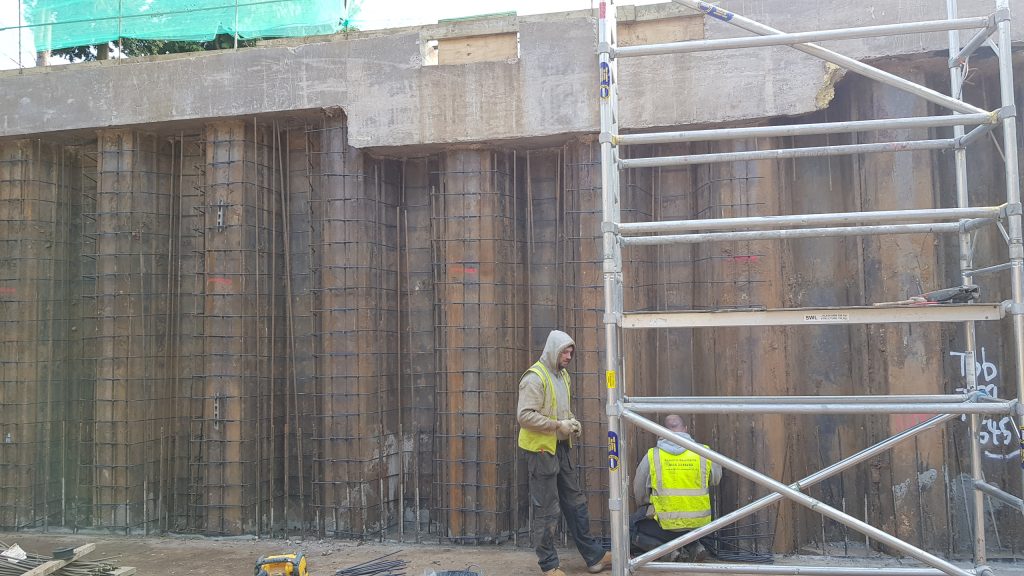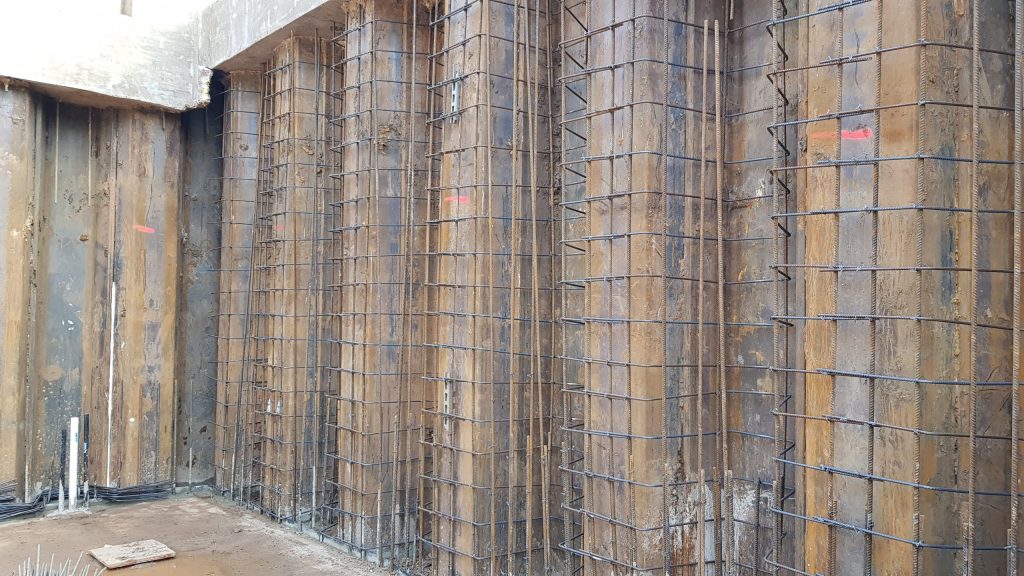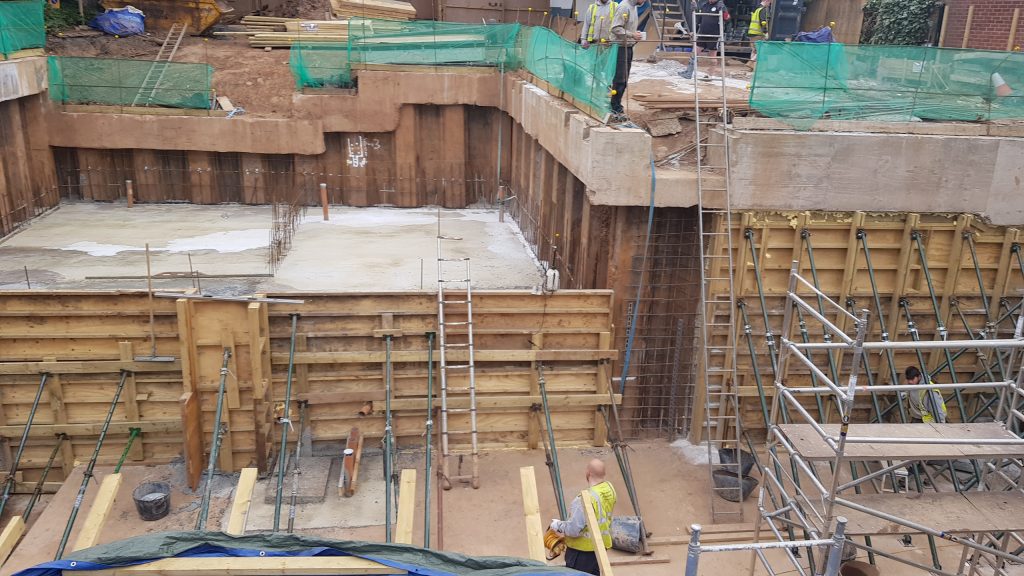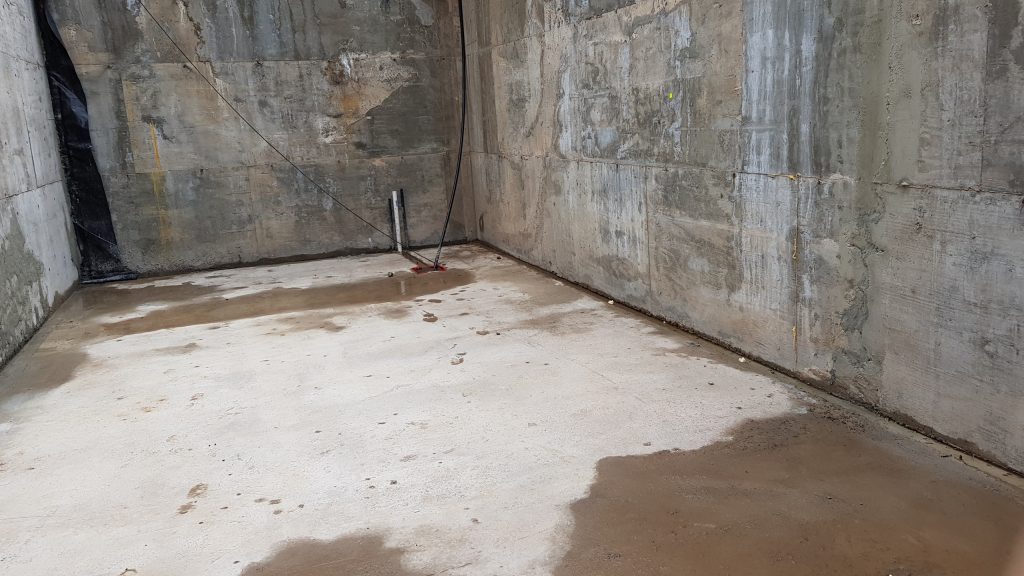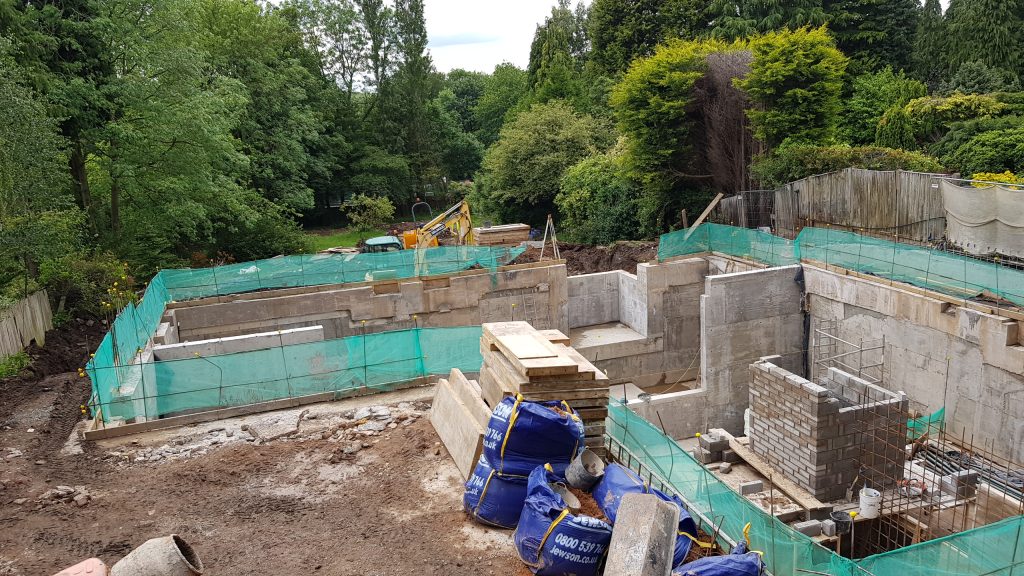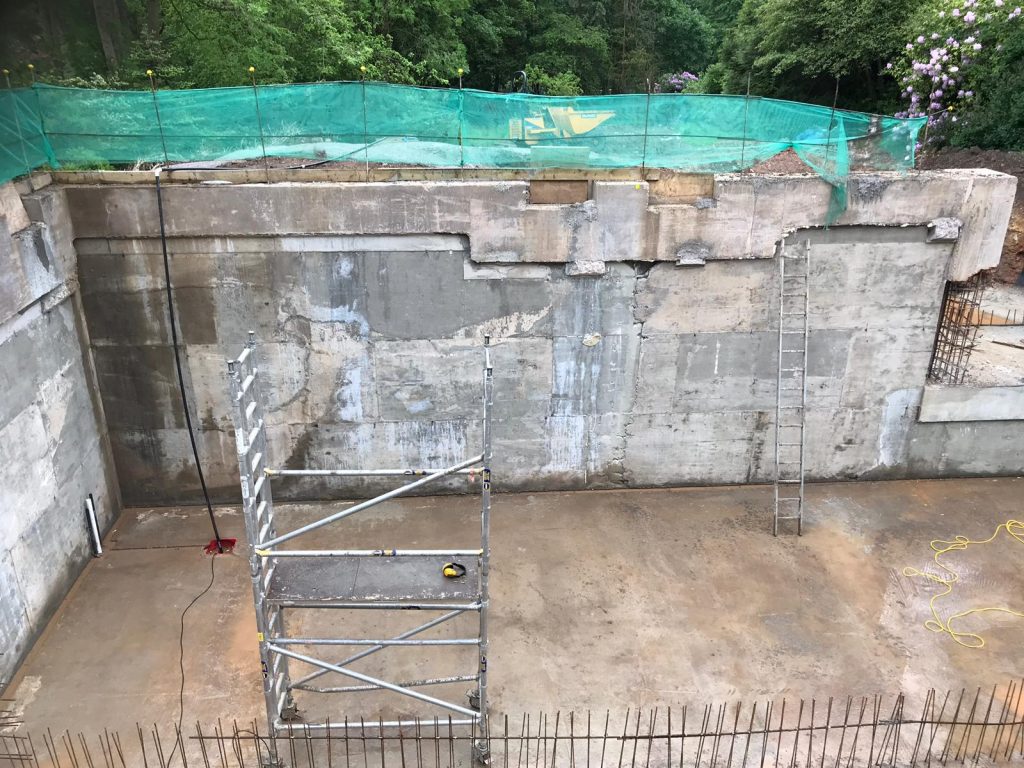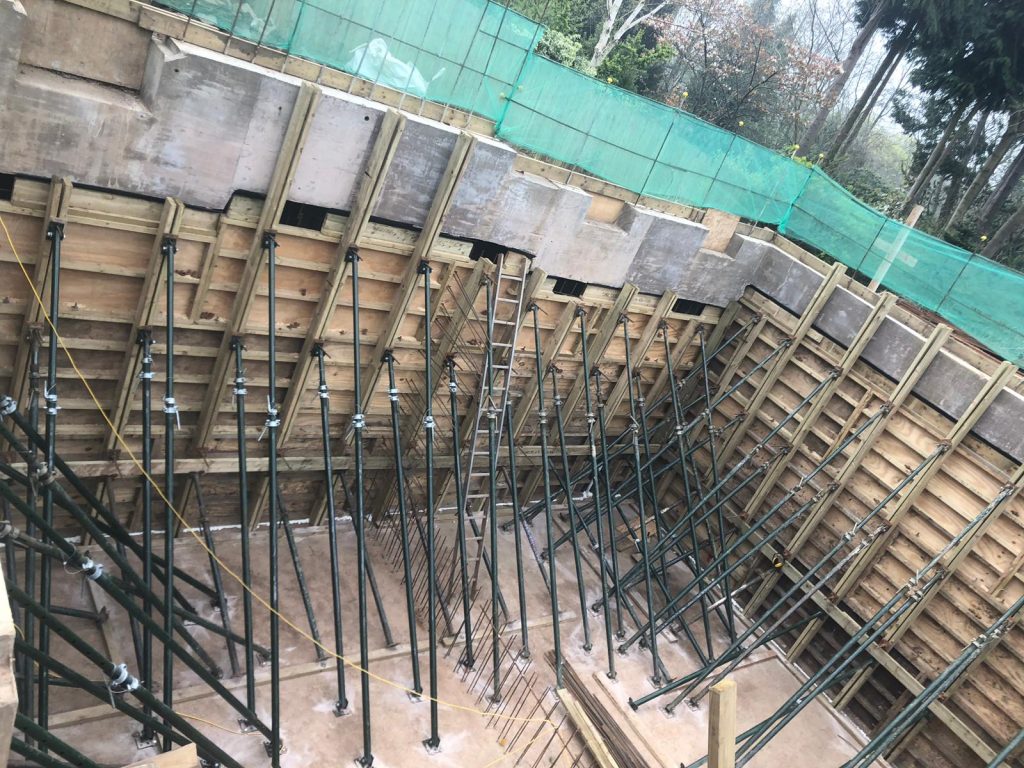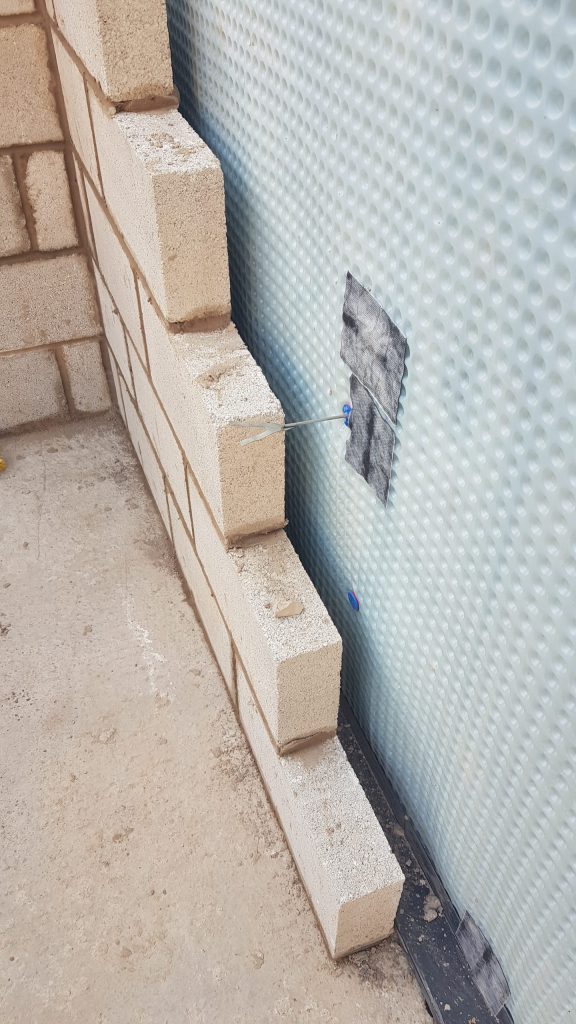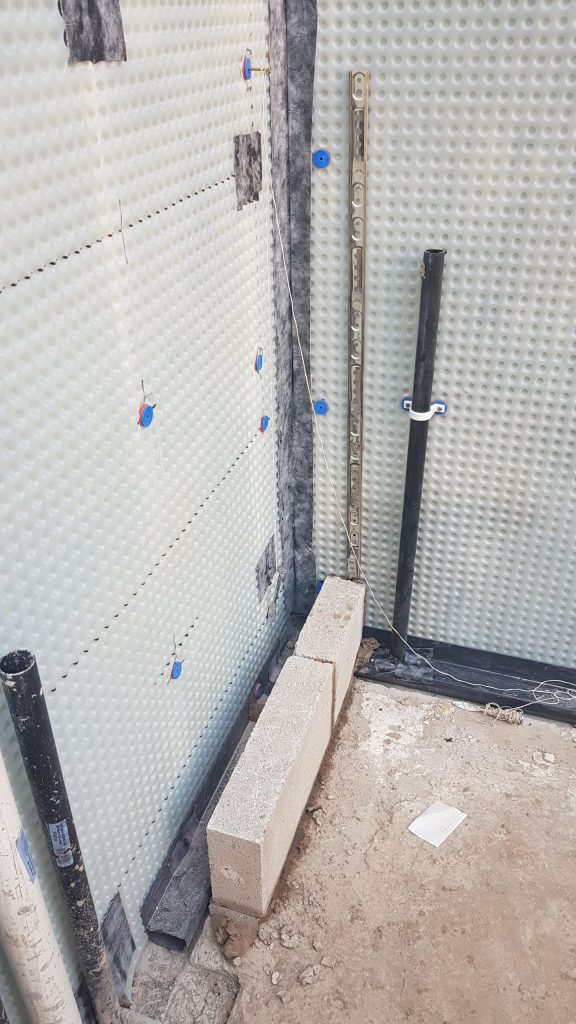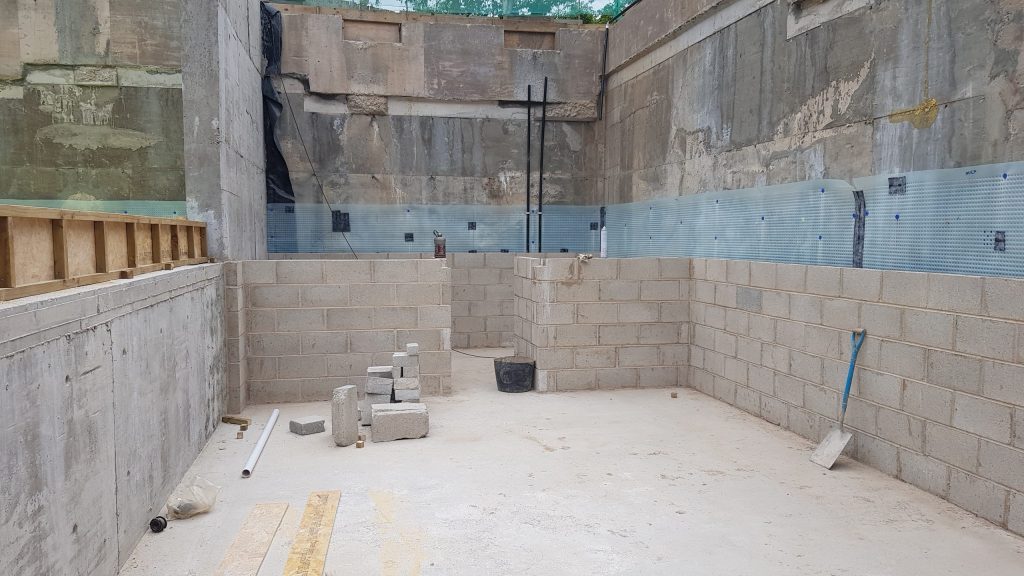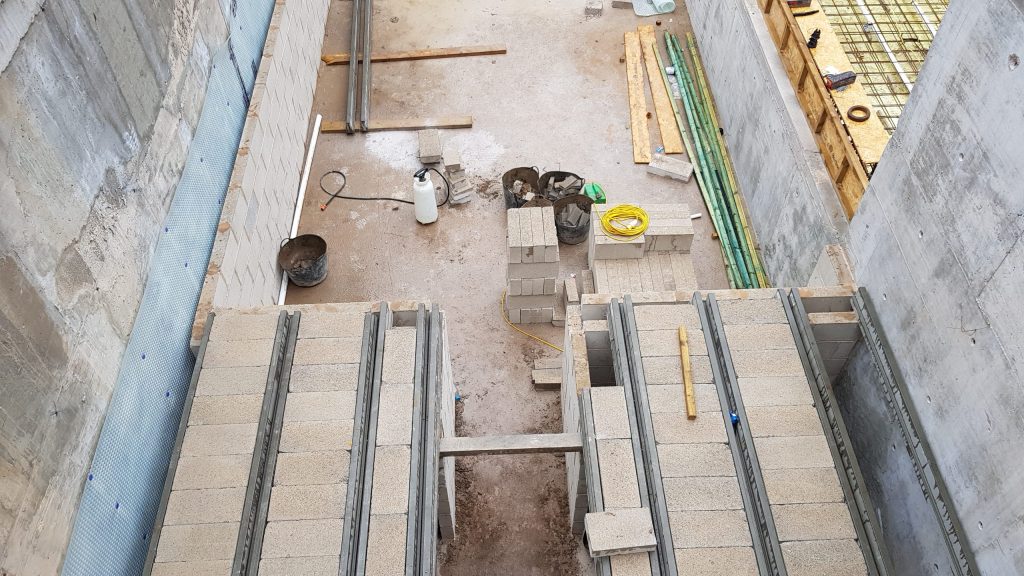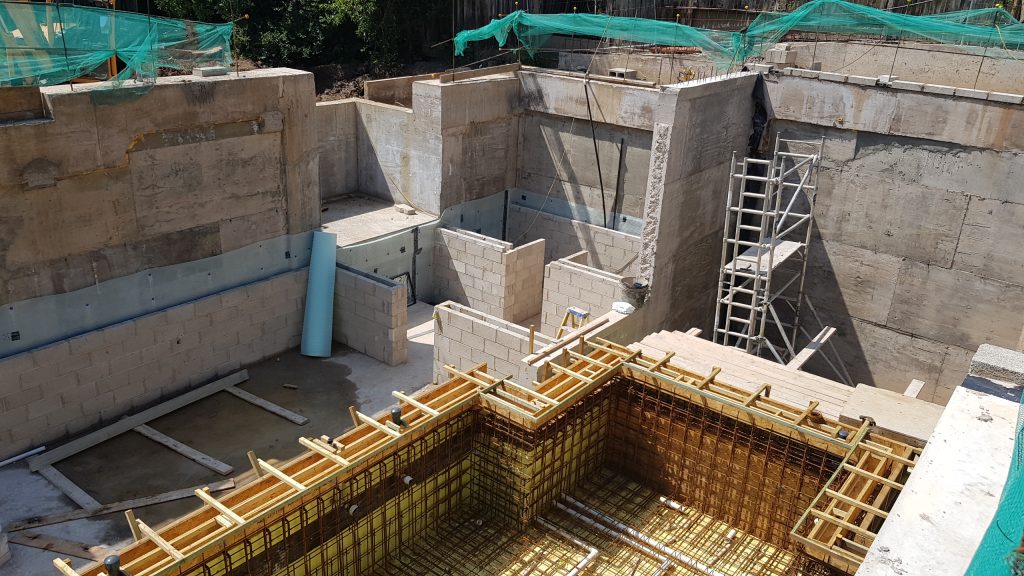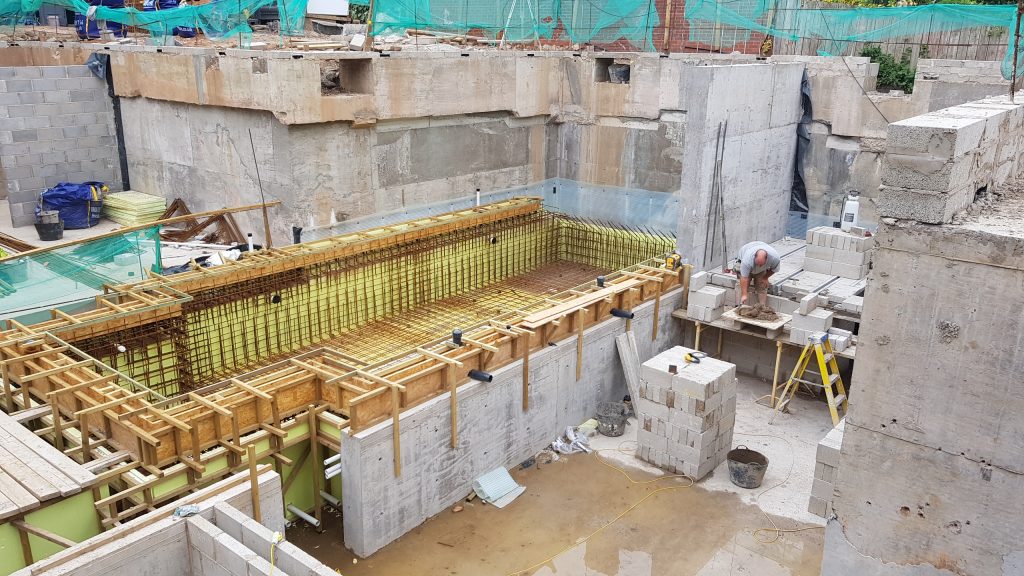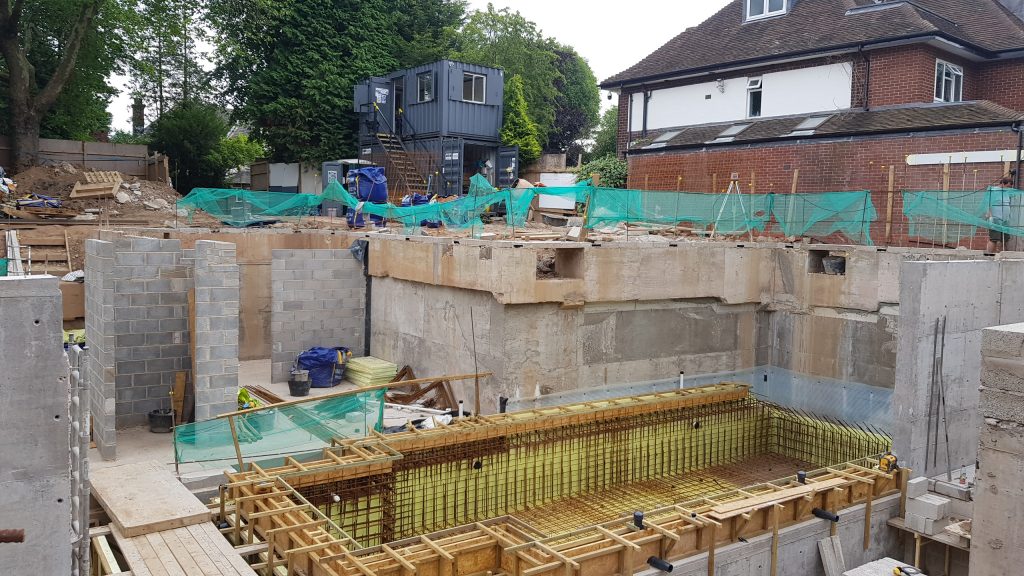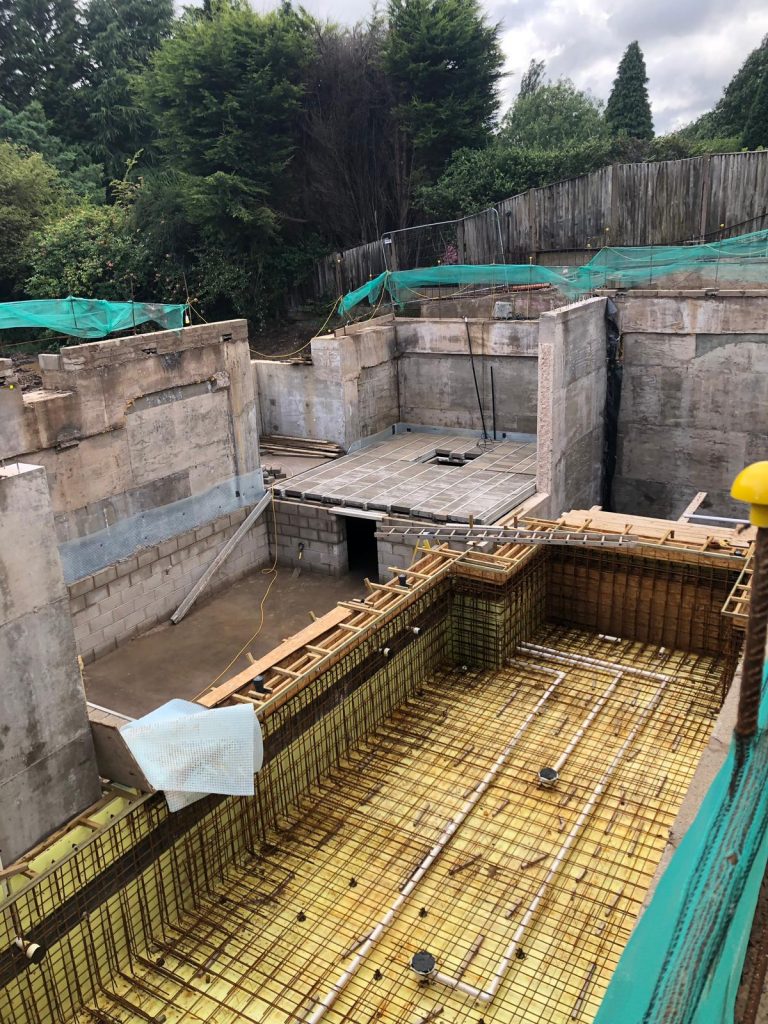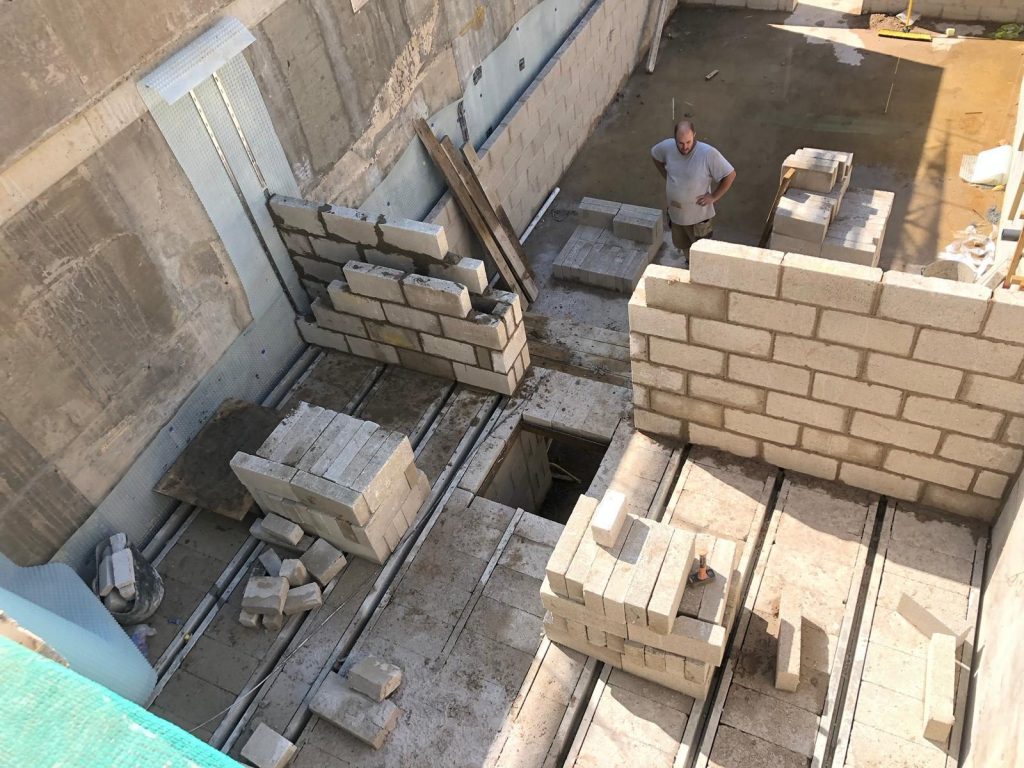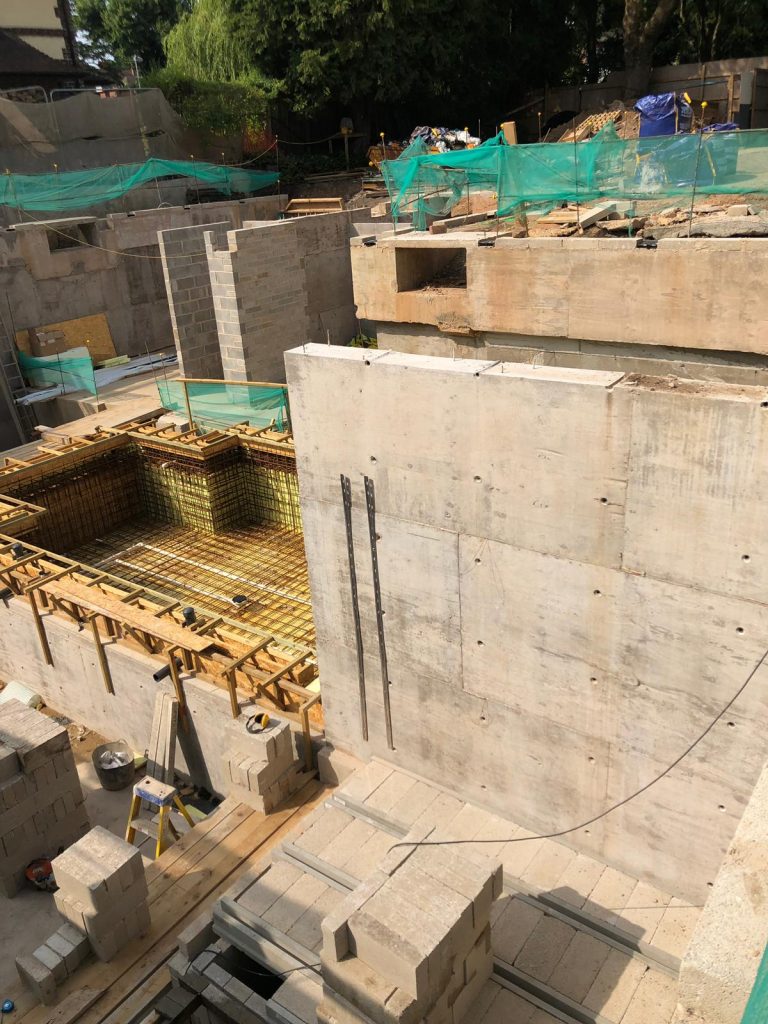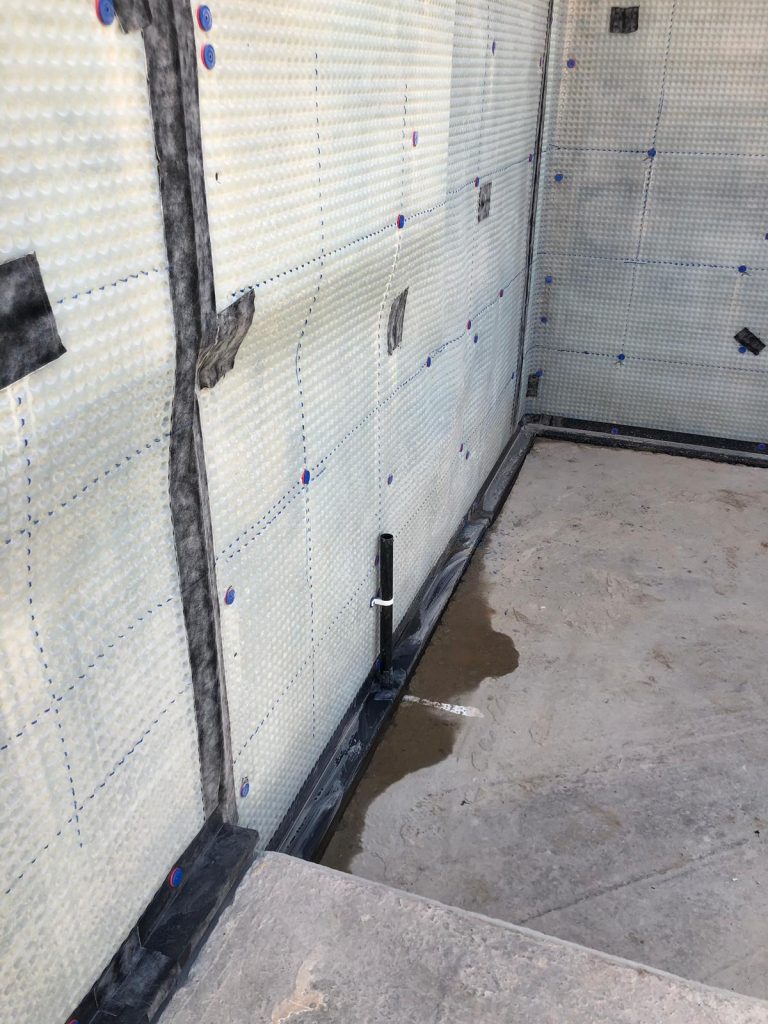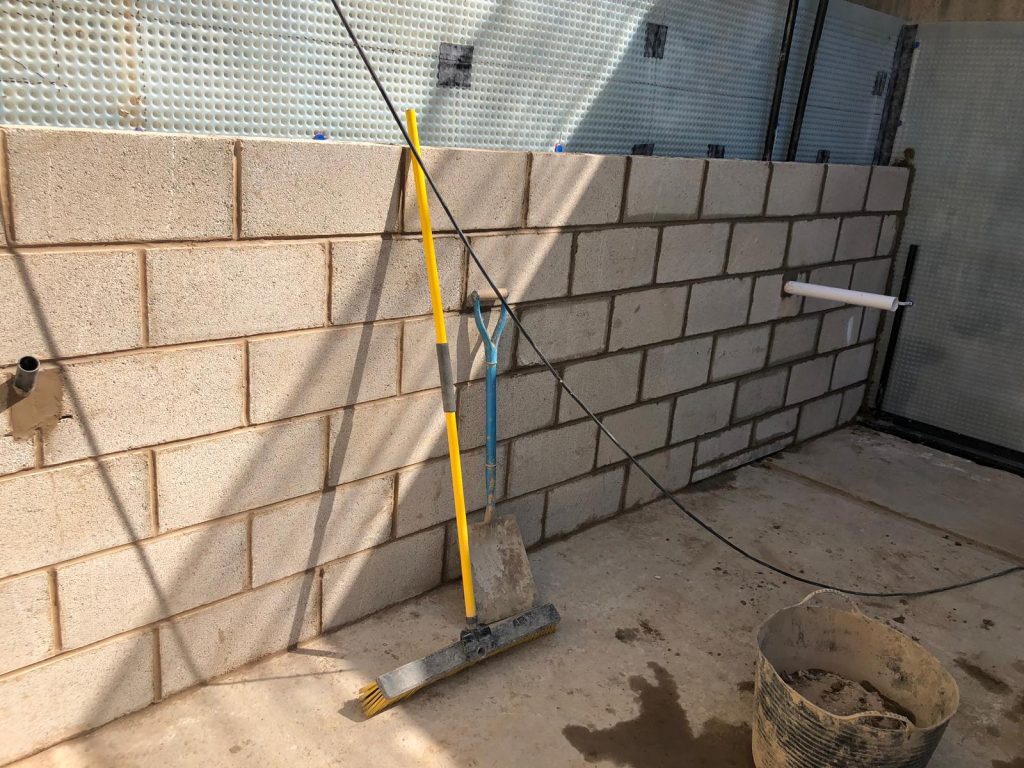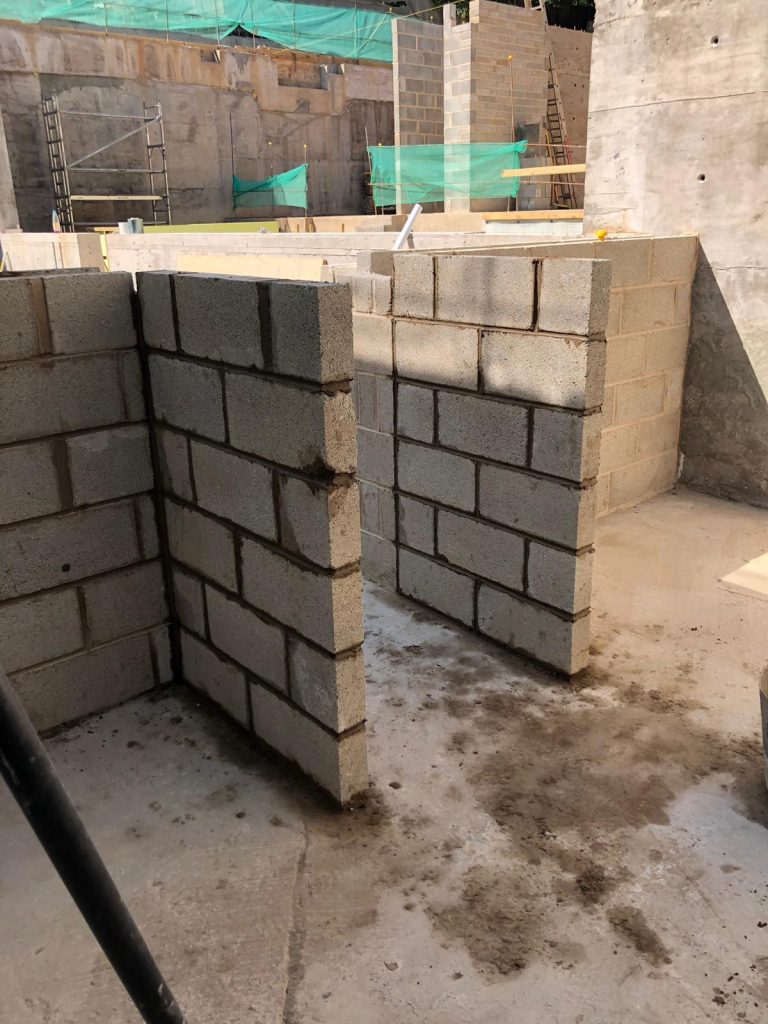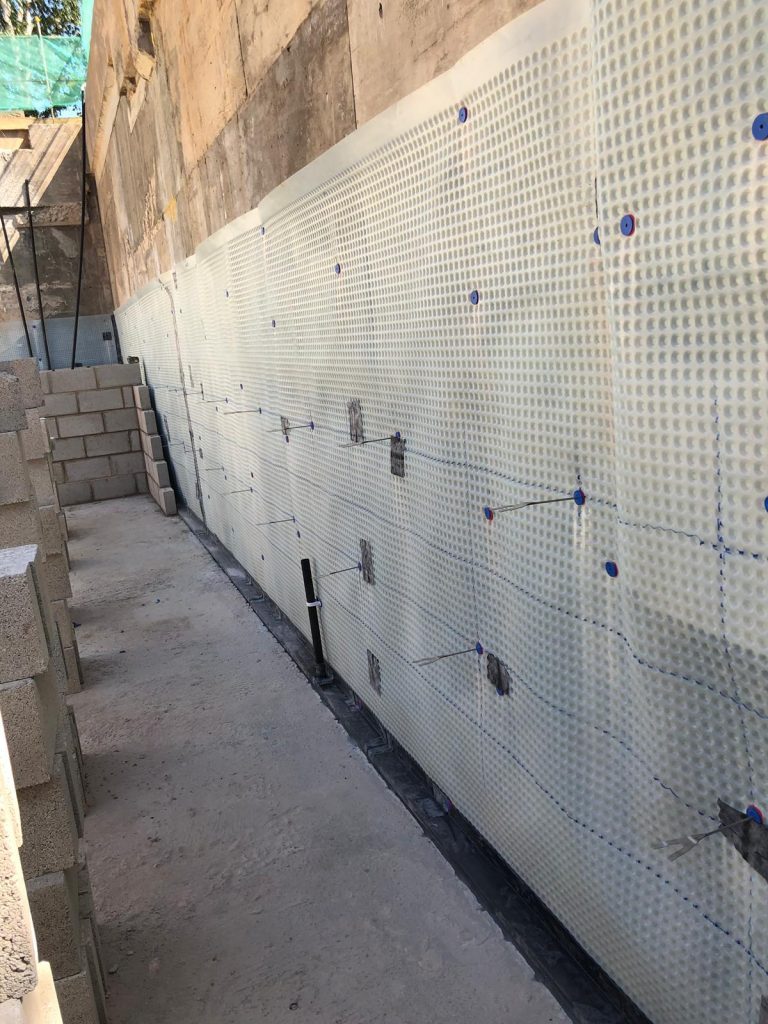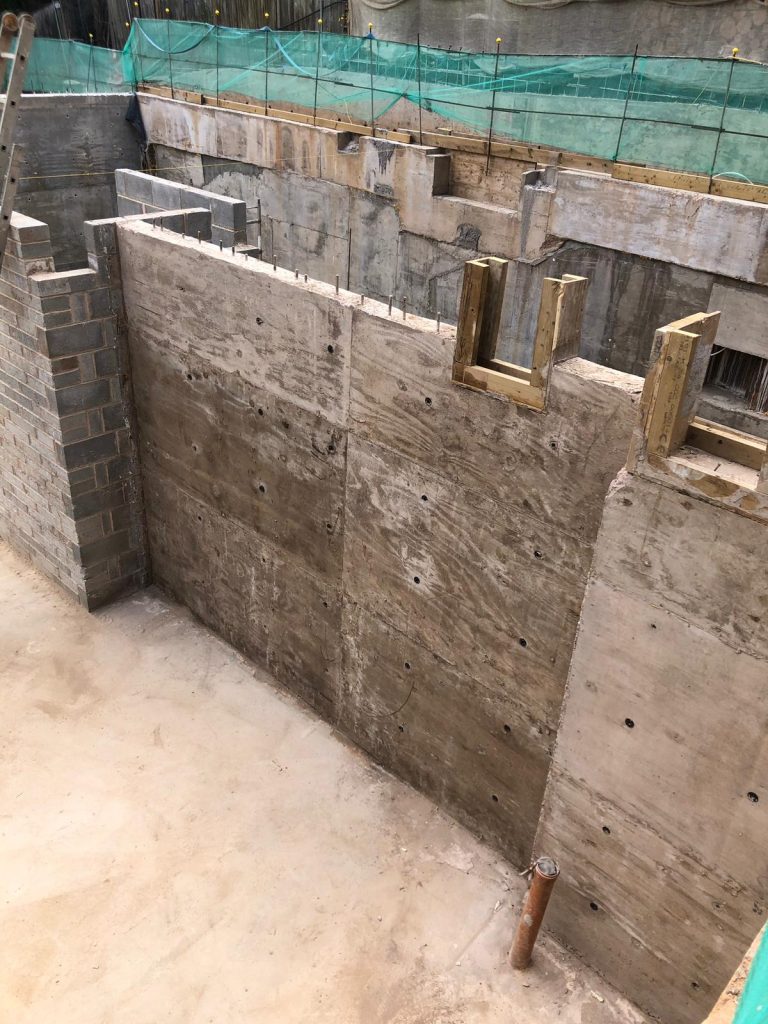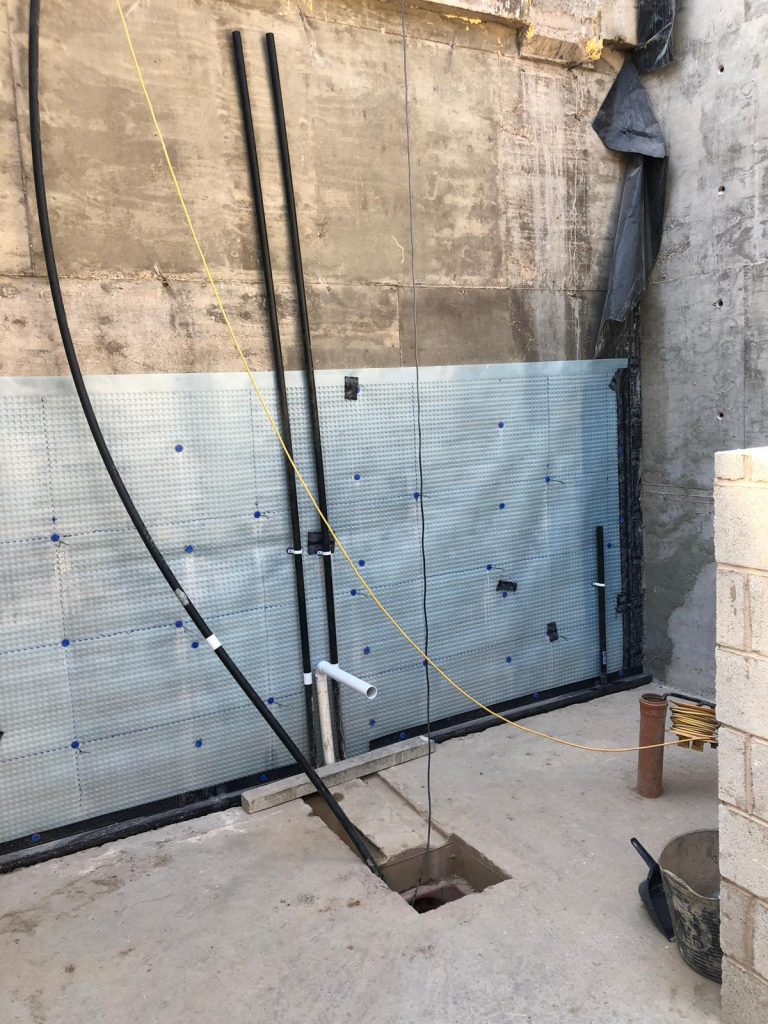Sheet piling, excavation & slabs
With such a confined space, the primary challenge to the design team was to produce a method statement for the excavation that would keep the team below and the neighbouring properties above safe.
The solution was to create a sheet piled perimeter around the entire footprint of the basement and then construct the basement inside these large steel sheets.
Steel sheet piles were drilled and hammered in to the ground, 10 metres deep. The top of all the sheet piles were connected with a reinforced concrete ground beam. This ground beam at the top and nearly 4m below formation at the ground lock the piles in place.
With the concrete ground beam cast & cured, the excavation could begin. It was done to around 3m first with a large temporary steel propping system installed to stop the sheet piled walls collapsing as the deeper excavations took place.
Fully propped, the full depth of 6m was achieved and a waterproof concrete, reinforced slab was installed at the base to secure the piles.




